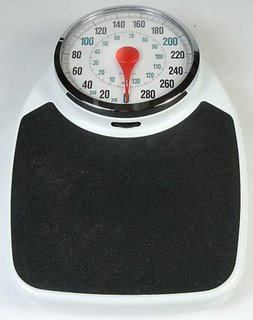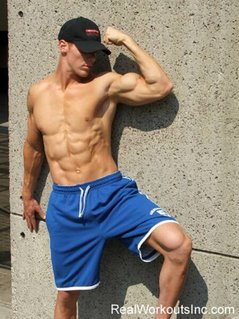This outline for a workout routine to build muscle has been devised for people just starting out in weight-training. It is simplistic in it’s approach, which is also why it is very effective for building muscle mass.
The key to proper weight training is to establish a good foundation in which to build upon, much like building a solid foundation for a house. If you cut corners and build a weak foundation for a house, as time goes on, the house will become weaker and less sturdy. Same thing with weight training.
Keep it simple. It is so much easier to focus effectively on a few tasks (exercises) than to spread yourself thin on many different ones.
This has been devised to follow for approximately 4-6 months, which at that time you can revise and edit the program to include other exercises and other approaches that a more intermediate weight lifter can use. But remember this, the more you know does not necessarily mean better results when it comes to trying to build muscle.
I have met very learned weight trainers who have been doing this for years but physically appear as though they don’t put into action what they have “learned.” It’s not so much “what you know” as it is how you “put into action” what you do know. Keep your routine simple, follow the suggested exercises (most have descriptive sheets that show you how to do a specific exercise) for approximately 6 months, and I guarantee you will start to build more muscle as a result.
Step 1. From the following muscle groups, pick two that you will be working out on day 1 of weight training.
Chest
Back
Shoulders
Legs
Biceps
Triceps
Day 1 _________ and __________
Then for day 2, pick two different muscle groups.
Day 2 _________ and __________
Finally, day 3 will include the last two muscle groups.
Day 3 _________ and ___________
Here is your three day weight training routine. Monday, Wednesday, Friday is good or maybe Tuesday, Thursday, and Saturday. The key is to give yourself a day in between weight training sessions so that you may include a cardiovascular session on your non-weight training days. Your week may look like this:
Monday: back & chest
Tueday: cardio
Wednesday: legs & shoulders
Thursday : cardio
Friday: biceps & triceps
Saturday & sunday ff
Step 2. Depending on which muscle groups you are training, pick 2-3 exercises for each muscle group from among the following list.
Chest
Flat bench press with bar
Flat bench press with dumbbells
Incline bench press with bar
Incline bench press with dumbbells
Dips
Back
Dumbbell one arm lat row
Cable lat pulldown to front
Seated back row on machine
Deadlifts
Bent over back rows
Lower back extension
Chin-ups (Pull-ups)
Shrugs for Traps (Dumbbells or barbell)
Shoulders
Seated military press with bar
Seated dumbbell shoulder presses
dumbbell side lateral raises
Bent-over dumbbell raises
Front dumbbell raises
Legs
Squats
Leg press
Leg curls
Leg extension
Stiff-leg deadlifts
Lunges
Calf-raises/presses
Biceps
Alternate dumbbell curls
Straight bar curls
Cable curls
Hammer curls (forearms and biceps)
Ez curl bar curls
Triceps
Triceps extension (lying down) (Skullcrushers)
Close-grip bench press
Cable triceps pushdowns
Dumbbell kickbacks
Abdominals
Lying crunches
Leg raises
Cable crunches
Stability ball crunches
Crunches on incline bench
Now plug each exercise into the appropriate spot on the next page to give you the whole week’s routine. As a beginner, you only need to do 2-3 exercises per muscle group, but do them well, with intensity.
Doing two exercises with intensity and focus is better than doing 3-4 with little or no intensity. Feel free to change the grouping of exercises every 2nd or 3rd week or you can stay with the same routine for the entire 4-6 months. It’s up to you.
Monday: muscle groups ______________ & _____________
1st muscle group___
1st exercise____________ x 3 sets
2nd exercise____________x 3 sets
3rd exercise (if applicable)____________x 3 sets
2nd muscle group______
1st exercise____________x 3 sets
2nd exercise____________x 3 sets
3rd exercise (if applicable)____________x 3 sets
*include 2 sets of 2 abdominal exercises
Wednesday: muscle groups ____________ & _____________
1st muscle group ________
1st exercise ________________x 3 sets
2nd exercise_______________x 3 sets
3rd exercise (if applicable)____________x 3 sets
2nd muscle group _________
1st exercise ______________ x 3 sets
2nd exercise _______________ x 3 sets
3rd exercise (if applicable)____________x 3 sets
Friday: muscle groups ________________ & _________________
1st muscle group __________
1st exercise ______________ x 3 sets
2nd exercise ______________ x 3 sets
3rd exercise (if applicable)____________x 3 sets
2nd muscle group __________
1st exercise _______________ x 3 sets
2nd exercise _______________ x 3 sets
3rd exercise (if applicable)____________x 3 sets
Include 2 sets of 2 abdominal exercises
You will be doing 3 weight training workouts per week.
You will be doing two muscle groups per workout (ex. Biceps & triceps). You will be doing two to three exercises per muscle group. (ex. Flat bench w/ bar, incline bench w/ dumbbells)
You will be doing 3 sets per exercise.
1st set-10 reps (warm-up)
2nd set-8 reps (weight acclimation)
3rd set-6 reps (heavy set)
On each set, try to progressively add a little more weight each time.
Keep records of your weight lifts so you can try to outdo (progress) each and every workout! You can do abdominals twice a week, spaced apart a few days.
This beginner's workout routine to build muscle will soon have you blasting past others in the gym.
About the Author:For a more in-depth and powerful weight training, cardio, and nutrition program, check out the proven "Simple Steps To Get Huge And Shredded" program from trainer and bodybuilder
Shawn Lebrun



















